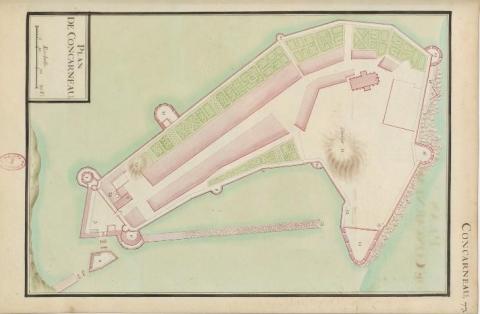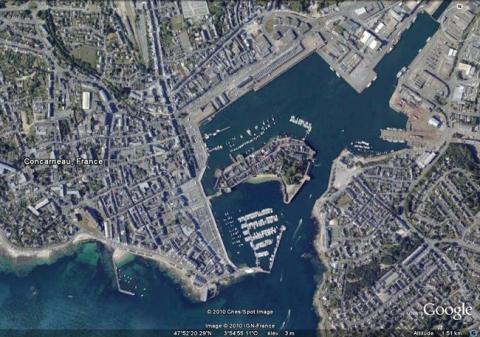Concarneau
History and description
The site of the rock of Concarneau has been occupied since the Protohistory, but it was not until the 10th century that an initial urban wall with palisade fencing was constructed. Moats were dug out on the front part. This urban wall was replaced by another of worked stone in around the 14th century, which was repaired in 1451. In 1491, the wedding of Anne de Bretagne with the King of France Charles VIII transformed Concarneau in a royal stronghold.In 1689, Vauban updated the medieval urban wall by adding to the main gate. This work saw the addition of a drawbridge and a ravelin. Two towers facing the sea, (tour du Fer à Cheval and tour Neuve) were equipped with new firing chambers. A project from 1694 remained incomplete.
In 1837, the July Monarchy modernised the site by raising the parapets, drilling the slots for shooting from and constructing a new barracks and a new powder keg. Apart from this work, the appearance was unchanged and was modified only slightly by the construction of a belfry at the start of the 20th century.
Current state
The medieval urban wall has been entirely preserved. It can be visited freely or with a guide, by arrangement with the local tourist office. A special guided circuit for visitors has been created: “Around the ramparts”.
Concarneau
Concarneau
47° 52' 34" N, -3° 55' 4" E

